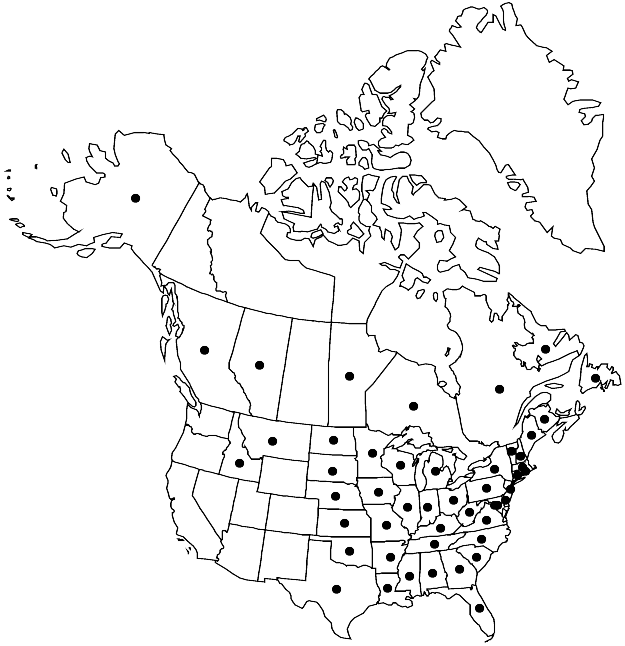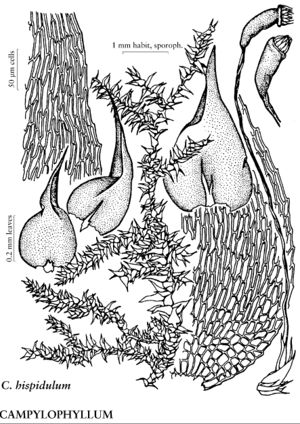Difference between revisions of "Campylophyllum hispidulum"
Bryologist 100: 74. 1997.
FNA>Volume Importer |
imported>Volume Importer |
||
| Line 63: | Line 63: | ||
|publication year=1997 | |publication year=1997 | ||
|special status=Illustrated | |special status=Illustrated | ||
| − | |source xml=https:// | + | |source xml=https://bibilujan@bitbucket.org/aafc-mbb/fna-data-curation.git/src/bb6b7e3a7de7d3b7888a1ad48c7fd8f5c722d8d6/coarse_grained_fna_xml/V28/V28_493.xml |
|genus=Campylophyllum | |genus=Campylophyllum | ||
|species=Campylophyllum hispidulum | |species=Campylophyllum hispidulum | ||
Revision as of 22:46, 27 May 2020
Plants green or yellow-green. Stems with paraphyllia absent; axillary hair distal cells 1–3, linear or shortly so. Stem leaves sometimes more erect when dry, ± recurved, sometimes slightly homomallous, densely or sparsely inserted, 0.2–0.5 mm wide; base erect to almost spreading; acumen 40–58% leaf length; basal alar cells short-rectangular, sometimes rectangular, distal alar cells transversely rectangular, quadrate, or short-rectangular, alar region large, reaching from margin 50–65% distance to costa at insertion. Seta 0.9–1.7 cm.
Habitat: Lowlands, soil, tree bases, decaying wood, forests, sheltered habitats
Elevation: low to high elevations (0-1700 m)
Distribution

Alta., B.C., Man., N.B., Nfld. and Labr., Ont., Que., Ala., Alaska, Ark., Conn., Del., D.C., Fla., Ga., Idaho, Ill., Ind., Iowa, Kans., Ky., La., Maine, Md., Mass., Mich., Minn., Miss., Mo., Mont., Nebr., N.H., N.J., N.Y., N.C., N.Dak., Ohio, Okla., Pa., R.I., S.C., S.Dak., Tenn., Tex., Vt., Va., W.Va., Wis., e Asia (Japan).
Discussion
Campylophyllum hispidulum and C. sommerfeltii are both small or minute species with more or less recurved leaves. The former has somewhat larger alar groups, and the alar cells tend to be shorter, varying from transversely rectangular to short-rectangular in the distal portion of the group to short-rectangular or rectangular more proximally. In C. sommerfeltii, the alar cells are quadrate to rectangular distally but elongate-rectangular to rectangular or sometimes shortly so proximally. The seta length varies from 0.9–1.7 cm in C. hispidulum to 1.2–2.2 cm in C. sommerfeltii, and fertile specimens can often be identified on the basis on this character.
Campylophyllum hispidulum and C. sommerfeltii are closely related, and some specimens are difficult to refer to either species. However, C. hispidulum has a wider geographical distribution than C. sommerfeltii in North America but does not occur in Europe, a clear indication that the two are different taxa.
Selected References
None.
